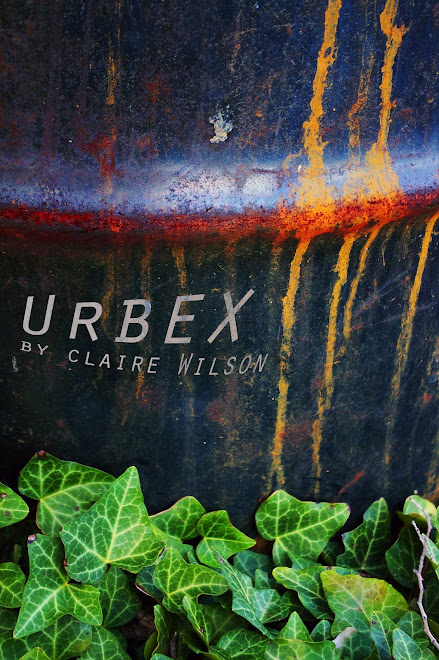Anyone reading this who is also a member of UER (Urban Exploration Resource for those of you who don't know), thank you. I have a great amount of respect for all of the UER members who truly care about urbexing and really have learned to respect abandonments instead of deface them or scrap everything they can out of it for money. A true urbexer is one who gets all of the personal satisfaction they can out of their explorations through art, writing, history, photography, journalism, etc without actually taking anything that doesn't belong to them.
I believe urban exploration is an art form, and honestly, it's somewhat irrelevant that it's illegal most of the time. Urbexers know exactly what they're doing and are willing to risk the consequences for the sake of their art, and true artistic beauty is not, should not, and cannot be defined by its legality.
For any of you who still aren't clear on what exactly urban exploration is, it's an underground hobby that involved exploring abandonments. Abandonments is a very general term, because urbexers generally explore anything that can be considered "behind the scenes". For example, draining. Draining is exploring storm drains, usually by entering through a manhole. The tunnel systems in different regions can be very complex and fascinating to explore, while other drain systems are just one long, boring tunnel after another leading to the same places over and over again. Abandoned hospitals, mental institutions, schools and prisons are hotspots for explorers. I enjoy buildings like these because of all the history that can be learned before you actually enter them; when I do finally explore them, it's that much better if I find something that I can link back to what I already knew about the building's history. Urban exploring is also an inspiration for many photographers; not every urbexer is a photographer, but for many explorers, photography is a hobby that goes hand in hand with exploring. Most urban explorer's follow a kind of unwritten code, which is basically to take nothing but photographs and leave nothing but footprints. Obviously not everyone follows this, but it's a good thing to keep in mind. For example, (speaking for myself here), I wouldn't respect someone who would tag a building with ugly graffiti, but someone who truly believes their graffiti is art and who actually has talent is someone I could admire. Someone who would strip an entire place of valuables to sell on Ebay is not someone I could respect. People who take pictures of themselves smoking cigarettes in an old wooden house and then post them up all over Flickr or Photobucket is not someone I could ever respect. Urban explorers develop a knack for scoping out a particular building or location, assessing the situation and acting accordingly. For example, smoking in an abandoned house made out of wood is a bad idea. Smoking in an abandoned facility with marble floors and tile walls is something else. Smoking is a bad idea either way, but you hopefully get my point.
So there was your introduction to the world of urban exploration. I DEFINITELY didn't cover even the tip of the iceberg, but there will be more writing to come.
For those of you who are interested in urban exploring and want to know more about it, definitely check out "The Art of Urban Exploration", by Ninjalicious. Yep, it's his alias-- and it's very appropriate, he was one of the great gods of urban exploration. Check it out if you ever get a chance!
I'm going to leave you with a few random photos I've taken during past explorations!










No comments:
Post a Comment